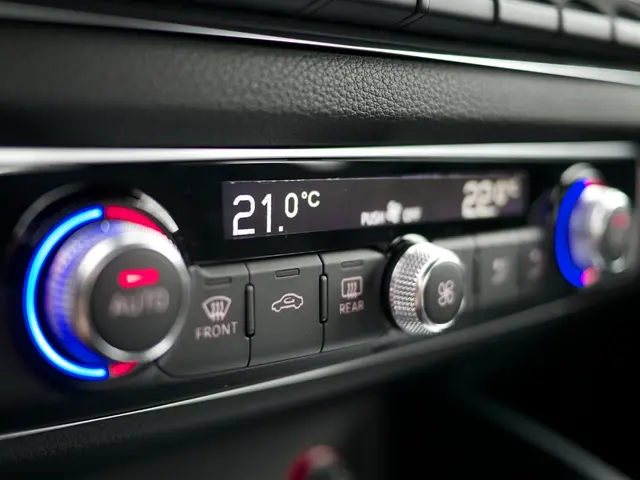Rapidly Growing Electric Vehicle Demand outpaces Sluggish Infrastructure Development: Study Reveals
The HERE-SBD EV Index, published on September 4, 2025, by Here Technologies and SBD Automotive, sheds light on the progress and challenges of the electric vehicle (EV) transition in the United States. The index combines market data with the results of an SBD survey of drivers, including 1,000 in the U.S., to analyze the current state of EV adoption and the obstacles that lie ahead.
Policy changes have created hurdles in the U.S. EV transition, as noted in the report. The Trump administration's six-month freeze of the federal EV charging expansion program (since reversed) and the uneven deployment of the federal program at the state level are among the issues highlighted. Additionally, the impending expiration of EV tax credits looms as a significant challenge.
Despite these obstacles, the expansion of EV charging points between 2023 and 2024 saw a 32% increase in charging points and an 82% boost in total charge power. This growth continued between June 2024 and June 2025, with the U.S. adding 37,000 EV charging points, resulting in a 19% increase and a 52% increase in total charge power.
The index ranks states based on factors such as the number of public chargers per road length, the average capacity of public chargers, the ratio of public chargers to EVs, and the share of EVs on the road. Washington, D.C., New Jersey, New York, and Massachusetts were among the top five states in the index's state EV infrastructure and uptake ratings. On the other hand, Nebraska, Minnesota, Arkansas, Idaho, and Alaska were among the bottom five.
Interestingly, Delaware was ranked as the top state for the second year in a row, despite a decline in its ratio of public chargers to EVs and the average charging power of public stations. This suggests that while infrastructure improvements are crucial, other factors, such as EV adoption rates, also play a significant role.
The survey found that 53% of U.S. respondents cited a "perception" of the lack of charging access as the top barrier to EV adoption. This underscores the need for more visible and accessible charging infrastructure to boost public confidence in EVs.
Robert Fisher, electrification and sustainability principal at SBD Automotive, stated that the findings suggest that current efforts are not sufficient to meet most regional electrification ambitions. He emphasised the need for stronger policies and more proactive product strategies to drive the EV transition forward.
However, the report also highlights that 5% of current EV drivers in the U.S. are considering switching away from electric vehicles. This indicates a level of satisfaction with the current EV offerings and suggests that the industry is making progress in addressing consumer concerns.
In conclusion, the HERE-SBD EV Index paints a mixed picture of the U.S. EV transition. While there are challenges to overcome, the growth in charging infrastructure and the continued demand for EVs are promising signs for the future of electric mobility in the United States.
Read also:
- Summarized Report: Insights from the Realm of Transportation
- Recorded surge in electric vehicle registrations during the initial half of the year
- Polestar CEO, Lohscheller, voices concern on the ongoing debates about competitors' products: "Maintain focus, avoid distractions"
- London Mayor Sadiq Khan under fire for raising Congestion Charge, with drivers facing an additional £80 million in yearly costs








